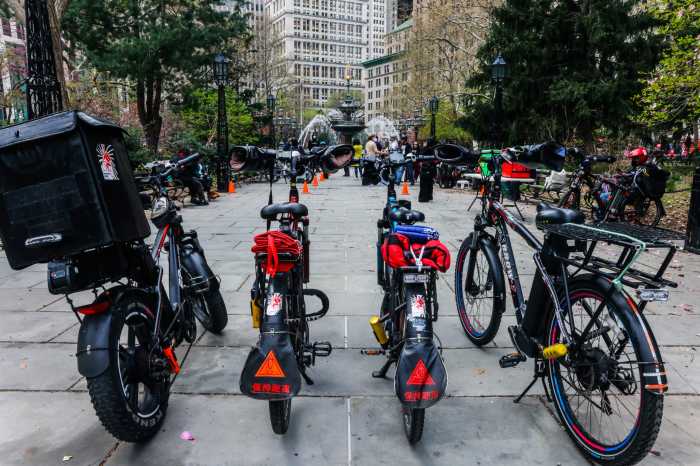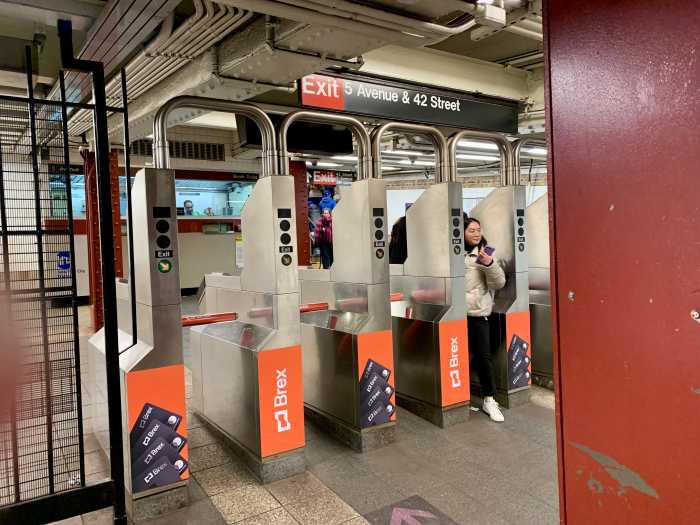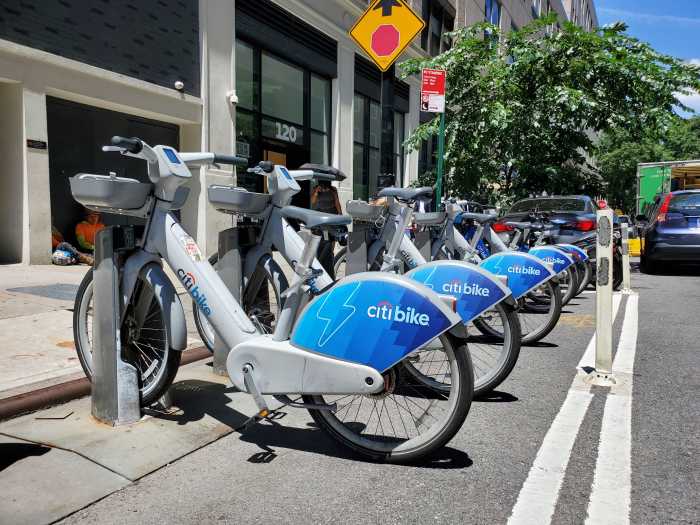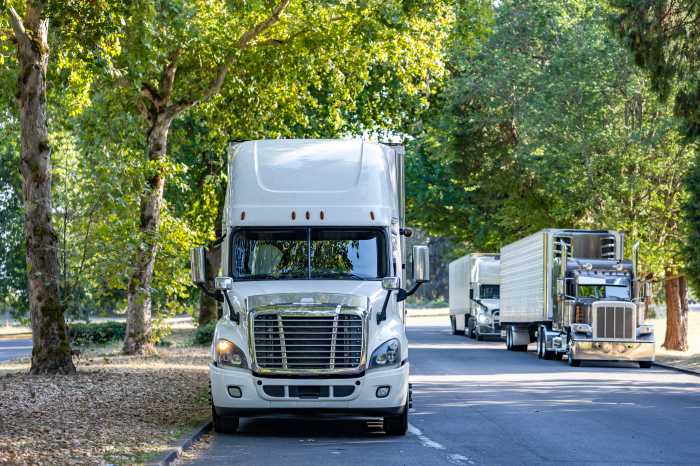
It’s a tall order for a short subway line.
The MTA has begun its major $266 million overhaul of the Times Square Shuttle that will add longer trains and wheelchair access for the connection between the Grand Central Terminal and Times Square-42nd Street transit hubs.
Last Friday, crews began prep work and public outreach on the project meant to rehabilitate a half-mile of crosstown track that was part of the original subway built in 1904, with netting and blue construction walls set up along the line and a reduction in service to accommodate the work.
“Times Square and Grand Central are the two busiest stations in the system, and those stations have to function optimally … they are so important to the entire system because there are so many connections made [there],” said Janno Lieber, the MTA’s chief development officer overseeing the project.

In addition to the wheelchair access, the biggest change for riders will come via the switch from a three- to two-track operation, which accomplishes two goals for the MTA: it will allow for a platform expansion to extend the Shuttle from four-car to six-car trains, and create one wider, more accommodating platform between the tracks — bringing more space for riders in both the terminals and trains.
That new design will eliminate the need for riders to often run around the “dogleg” third track in order to catch the next Shuttle.
“It’s a really chaotic piece of the system from a customer standpoint, and the way to deal with it is what we’re doing, which is to create a one-platform configuration with two tracks,” Lieber added.
The platforms in Times Square’s terminal will also be pushed up so as to eliminate most of the curved portion of track in the station. That element of the project reduces the gap between the platform edge and the train car, making it easier for wheelchair users.
More than 1.1 million subway riders enter and exit the Grand Central and Times Square stations on an average weekday, with roughly 100,000 of those riders taking the Shuttle, according to MTA estimates.
The construction will take three years to complete, during which time the MTA will be forced to reduce the length of its trains from four cars to three. Wait times aren’t expected to increase, with trains now scheduled to show up every three minutes.
A new entrance will also be built with a 15-foot staircase as well as an elevator in Times Square, at 42nd Street and Broadway. An existing staircase at the western end of the Grand Central station will also be widened to 15 feet.
The MTA is advising riders to consider taking the 7, instead, to help reduce crowding on the Shuttle. But riders seemed to grit through the inconvenience for the promised benefits on Wednesday, with some agreeing that the Shuttle was one of the more consistent slices of service in a transit authority that is in the midst of improving on embarrassing levels of subway unreliability.
“To get from the east side to the west side, yeah, it’s much more convenient than anything else,” said Ermes Raverta, 46, a messenger who takes the Shuttle as many as 15 times a day.
For other riders, like Amelia Pabon, the Shuttle is a crosstown option offering a respite from potentially punishing New York weather.
“I think that people just have to get used to … the construction,” Pabon said, “but after it’s done I think it’s a good thing.”
With Liam Quigley


































